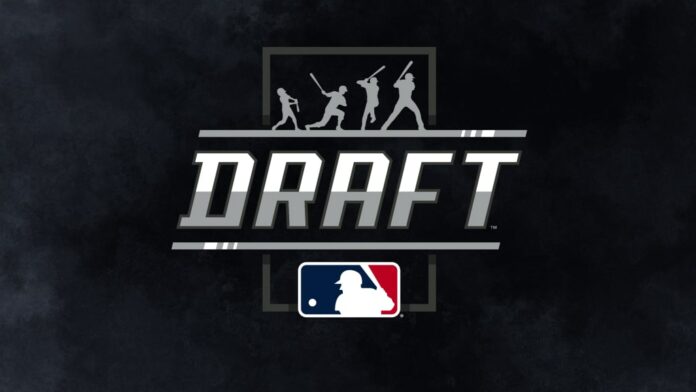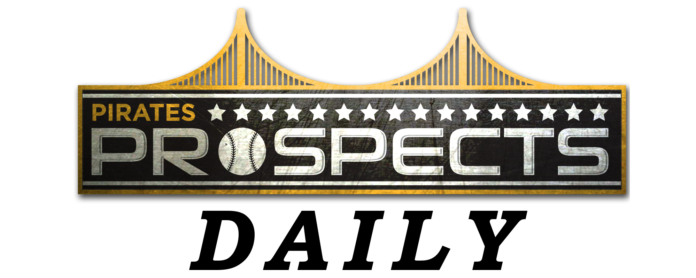To be honest, I’m always looking for something I can spreadsheet about, especially when it comes to baseball.
After the lockout last year, when the slot for the number one pick was reported, as well as how much the total pool was expected to be, I thought it would be fun to tackle an exercise I had never done before—estimating the draft pool.
It took a lot of perfecting over a few months, but when all was said and done, I ended up being a mere $1,400 off and estimating the Pittsburgh Pirates’ pool exactly—before they changed the slot values right at draft time to equal exactly $280 million that is.
So, when the playoffs were underway and I had nothing better to do during the downtime it represents for the Pirates, I decided to build it out again for 2023. Compiling all the available pertinent information, all that was left were the results of the lottery to have a good solid start.
Well, we all know how that turned out, so fresh off the Pirates’ big win, this seemed like a good time to explain where it looks like the Pirates—and the league—will sit when it comes to available draft pool funds next July.
For total transparency—I thought I was special, embarking on this mission months and months in advance. Well, maybe I was in October, but I had no idea MLB Pipeline had this information available until last week. When I checked my order against theirs, I had all but two picks correct—it turns out compensation picks for unsigned third round picks come at the end of the round, not the next numerical pick of the unsigned player—which I’ll take when it comes to around 315 spots.
Of course, the order can still change due to one player—Nathan Eovaldi—who did not sign their Qualifying Offer and is still on the market. That signing could add one pick after the fourth round; however, we don’t know how many picks the signing team would have to cede, as it depends on who makes the signing.
At this point, while the numbers could change a lot for teams involved in those signings—as well as trades of Competitive Balance Rounds A and B picks—they won’t change a lot for the Pirates, aside from moving up or down a few spots here and there.
In the most up-to-date version of my estimate, here is where I have the Pirates:
| Team | Pirates |
| Pick | Sum of Slot |
| 1 | 9,731,600 |
| 42 | 2,048,100 |
| 67 | 1,129,500 |
| 73 | 991,400 |
| 105 | 641,000 |
| 140 | 456,100 |
| 167 | 351,800 |
| 197 | 274,100 |
| 227 | 217,100 |
| 257 | 184,700 |
| 287 | 171,400 |
| Grand Total | 16,196,800 |
That covers the Pirates, but what about the rest of the league?
| Team | Pool |
| Pirates | 16,196,800 |
| Tigers | 15,758,100 |
| Nationals | 14,511,700 |
| Twins | 14,342,700 |
| Athletics | 14,265,200 |
| Reds | 13,794,100 |
| Mariners | 13,169,200 |
| Marlins | 12,764,800 |
| Royals | 12,320,500 |
| Rockies | 11,902,400 |
| Diamondbacks | 11,076,300 |
| Brewers | 10,944,700 |
| Rangers | 10,861,700 |
| Rays | 10,803,000 |
| Orioles | 10,523,400 |
| Giants | 9,909,700 |
| Red Sox | 9,794,500 |
| White Sox | 9,064,300 |
| Cubs | 8,953,100 |
| Guardians | 8,730,800 |
| Mets | 8,490,200 |
| Braves | 8,337,200 |
| Angels | 8,317,400 |
| Dodgers | 7,328,800 |
| Astros | 6,743,800 |
| Blue Jays | 6,519,400 |
| Cardinals | 6,364,800 |
| Padres | 5,410,600 |
| Yankees | 5,293,200 |
| Phillies | 5,180,900 |
Compared to 2022, I increased the slot for each pick by 10%. This is based on a detail mentioned in The Athletic’s reporting (linked above):
The 2019 figure of $9.741 billion is the starting point, and once the sport exceeds that number, then growth calculations commence.
Rob Manfred himself said revenues will be approaching $11 billion for 2022, which would be an increase of nearly 13%. I decided to be a little more bearish, lowering my increase to 10%. While it may not be exact, I think it should at least illustrate nicely where teams are projecting, especially since no one is really doing that yet.
The $16,196,800 would have been the second highest pool last year, bested only by the Baltimore Orioles, who also had picks in the CompA and B rounds (after acquiring the CompB pick via trade), which explains the higher amount, even after the aforementioned increase.
For reference, when the Pirates had the first overall selection in 2021, their pool was almost $2 million lower, at $14,394,000.
If the team chooses to use it as they did in 2021, it’s the financial might that is the real asset. If they decide to sign their first pick at or around slot—as we saw in 2022—it’s harder to have substantial savings against slot in the lower rounds, meaning the results likely won’t be as bombastic across the entire draft, as 2021 was.
There’s a lot of time between now and then, as a strategy can become clearer when the best players available are more well defined.
One note of particular interest—at least to me—before we go. The Seattle Mariners, thanks in large part to their Prospect Promotion Incentive (PPI) pick—the first one ever—sit seventh in pool money despite not picking until twenty-two.
For reference, last year’s pool for the team picking at twenty-two ranked 24th.
This is obviously an example of the positive side of the designed system, and possibly something for other teams to keep in mind down the road. It was the only PPI pick awarded for 2023, but we could see more in the future if certain prospects succeed as hoped down the road.
Offseason Calendar Update
No updates here as of this week
Pirates Payroll Updates
—Yesterday evening, the Pirates seemingly shored up their hole at catcher, agreeing with Austin Hedges on a one-year, $5 million deal.
Hedges has 6.166 years of service, so he’ll be a free agent again come the end of the season.
My projection still only has one catcher on the major league roster—which I’ll have to remedy at some point—but for now, I optioned Canaan Smith-Njigba to make room on the active roster, while outrighting Ryan Vilade to make room on the Reserve List.
As a result, payroll went up $4,506,682 and eclipsed $60 million for the first time this offseason.
—For 2023, the payroll estimate stands at $61,167,066 for the Labor Relations Department, while it’s $77,583,733 for CBT purposes.



